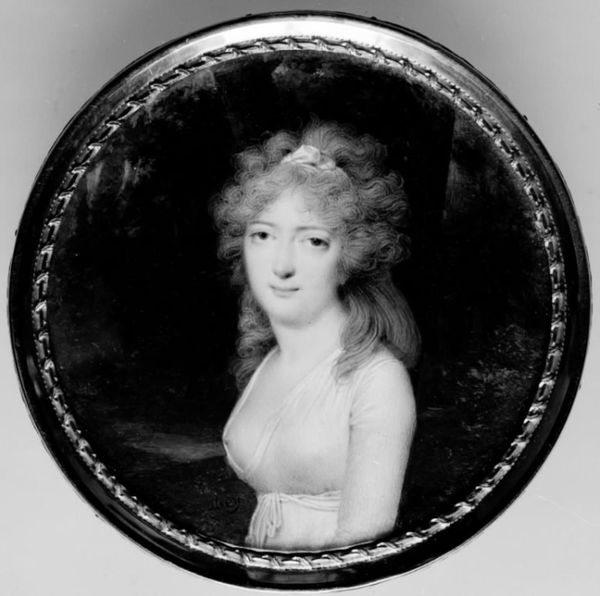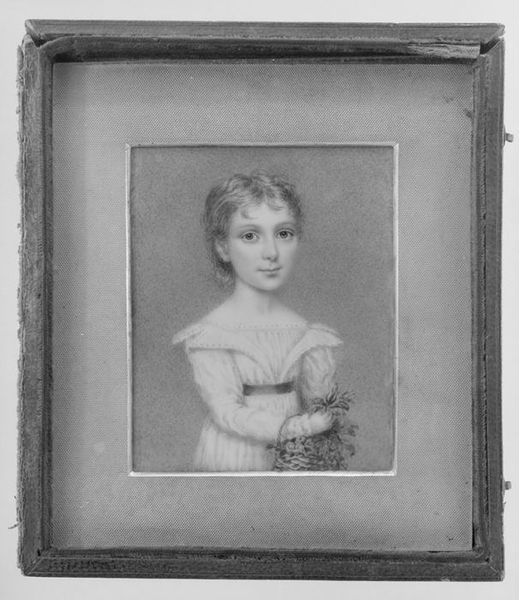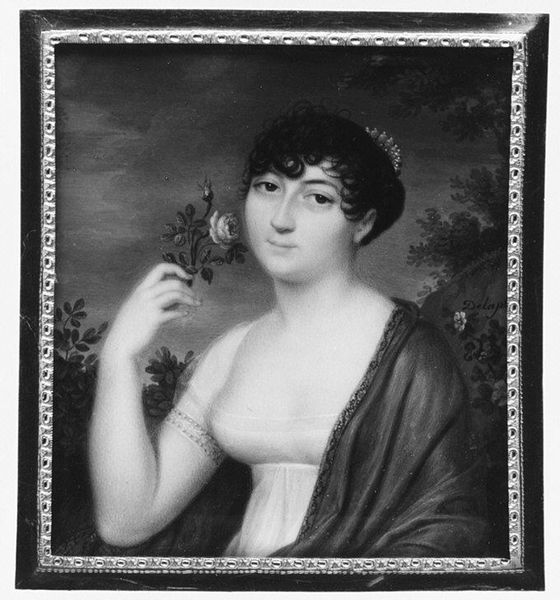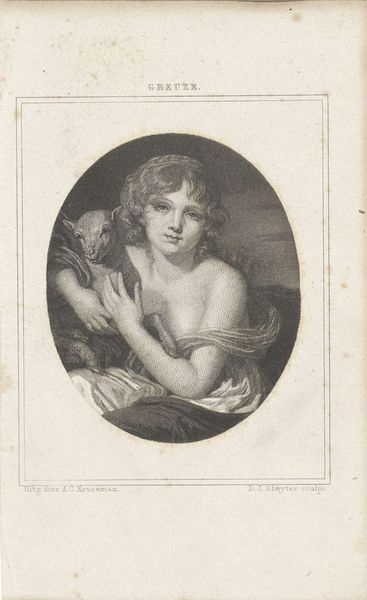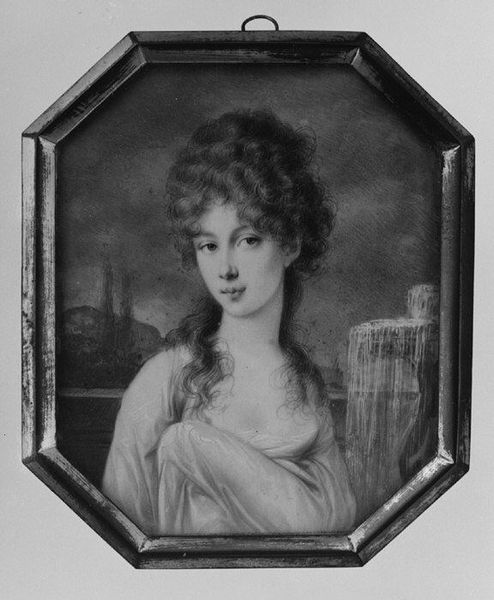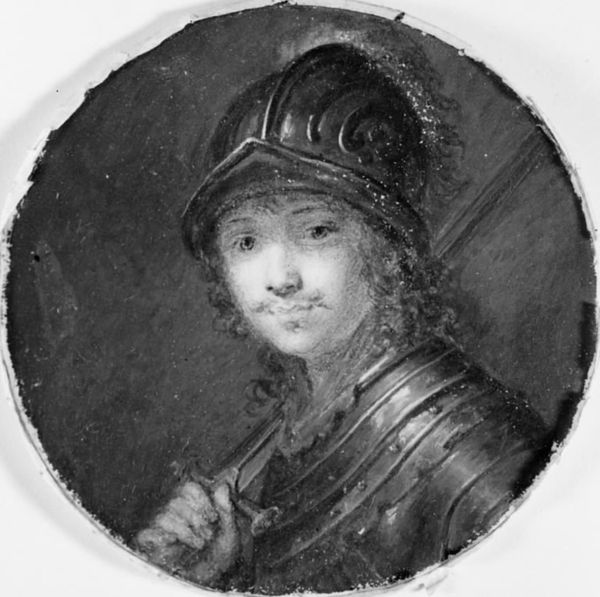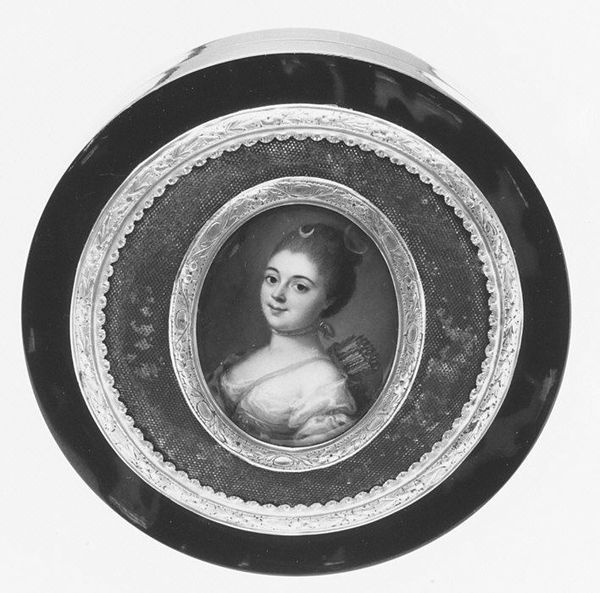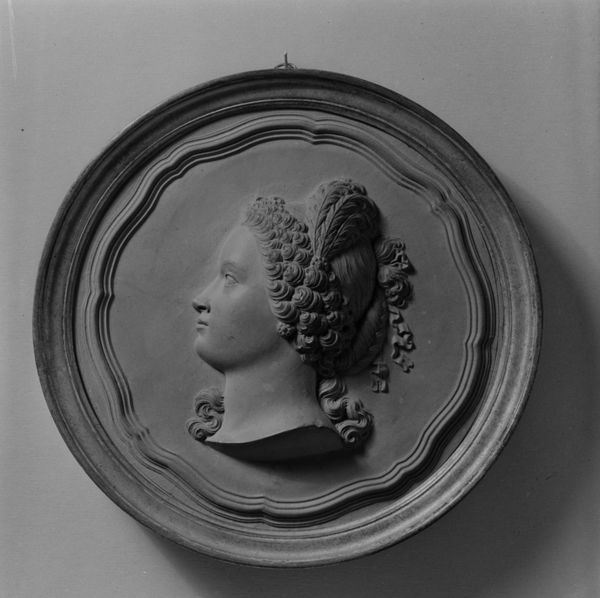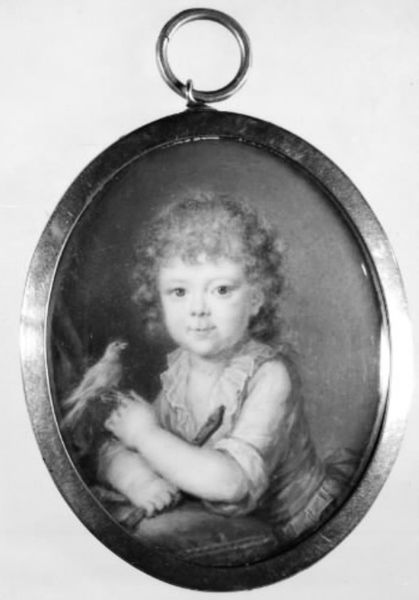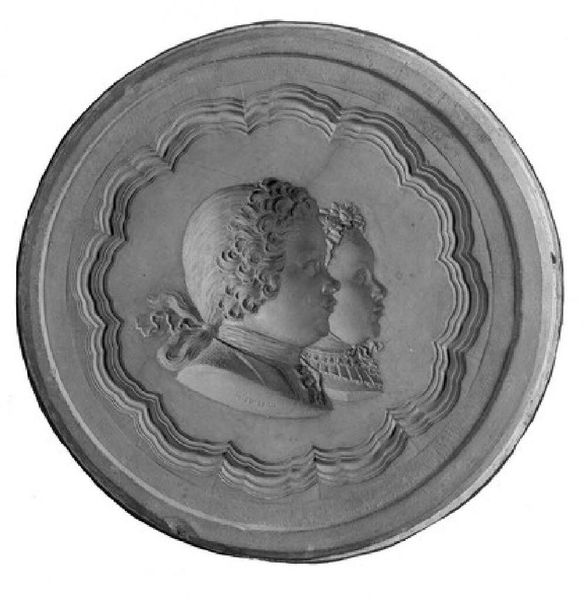
Madame Jean-Baptiste Isabey (Jeanne Laurice de Salienne, died 1829) 1796 - 1800
0:00
0:00
drawing, paper, pencil
#
portrait
#
drawing
#
self-portrait
#
portrait
#
paper
#
romanticism
#
black and white
#
pencil
#
miniature
Dimensions: Diameter 3 3/8 in. (86 mm)
Copyright: Public Domain
Editor: We’re looking at a pencil drawing from sometime between 1796 and 1800: Madame Jean-Baptiste Isabey, drawn by her husband, Jean-Baptiste Isabey. It’s a tiny portrait, she’s sewing, and the black and white gives it a very intimate, almost ghostly quality. What do you see in it? Curator: What strikes me is the performance of domesticity that’s captured. Consider the context: post-revolutionary France. Traditional aristocratic structures were being dismantled and notions of femininity were shifting. How does this portrait reinforce or challenge those shifting roles? Editor: So, is the sewing more than just an activity? Is it a statement? Curator: Exactly. Sewing, traditionally a domestic duty, becomes a symbol. This isn’t just a portrait of a woman; it's a statement about her role, perhaps even a strategic presentation of her identity in a society undergoing radical transformation. Does she look like she is doing it by her own will, or is she constrained by society into such performance? Editor: That makes me look at her differently. The details become so important - the loose dress, the carefully styled hair, even the sewing implements. Are these indicators of her social class, or is she playing into a particular ideal? Curator: Precisely! These details become crucial. Think about the politics of image-making at this time. How did portraits like this circulate? Who saw them, and what messages did they convey about the sitter's social standing and political allegiances? These images weren't just decorative; they were actively shaping perceptions and influencing social narratives. Editor: I’ve never thought about portraiture in such a socio-political way. It's fascinating how a simple drawing can be a window into the complexities of an entire era. Curator: It's a reminder that art doesn't exist in a vacuum. It's always engaged with the social, cultural, and political forces that shape its creation and reception. Editor: Definitely gives you a lot to consider! Thanks.
Comments
No comments
Be the first to comment and join the conversation on the ultimate creative platform.
